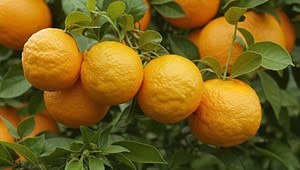Table of Contents
Citrus Fruits: Tangy and Tasty With Amazing Health Benefits

Citrus fruits are a vibrant and flavorful family of fruits, known for their bright, tangy flavors that range from sweet to intensely sour. Often enjoyed in their whole form or freshly squeezed as juice, they bring a refreshing burst of taste that enlivens both simple snacks and elaborate dishes. From juicy oranges to zesty lemons and sweet-tart grapefruits, citrus fruits are incredibly versatile in the culinary world. They enhance the flavor of savory and sweet recipes alike, adding a sharp contrast to salads, marinades, and desserts, or even serving as the star ingredient in marmalades and sorbets.
Beyond their culinary appeal, citrus fruits are also packed with nutritional benefits, making them a staple in health-conscious diets. They are well-known for being excellent sources of vitamin C, a nutrient that supports the immune system and promotes healthy skin. Additionally, they provide antioxidants that combat inflammation and support overall well-being. Citrus fruits are also rich in fiber, contributing to digestive health, and they contain a variety of essential vitamins and minerals, such as potassium, calcium, and B vitamins. The natural oils found in their zest are not only aromatic but have been used in traditional medicine and modern wellness practices for their uplifting properties.
These fruits also play a role in heart health, as some compounds found in citrus have been shown to aid in reducing cholesterol levels and supporting better blood pressure control. Whether used to add zest to a dish, brighten a drink, or provide a satisfying snack, citrus fruits deliver both taste and nutrition in a unique way. Their vibrant colors, from oranges and yellows to vivid greens, are a feast for the eyes as much as their juicy flesh is a delight for the taste buds. Moreover, the diverse varieties offer an experience that can range from gently sweet to sharply tangy, making them favorites for those who appreciate complex and invigorating flavors.
Embracing the numerous benefits and uses of citrus fruits can elevate everyday meals and contribute to a healthier lifestyle, showcasing their timeless appeal that has transcended generations and regions. In this article, we are going to talk about 8 amazing citrus fruits that have some incredible health benefits.
1. Oranges
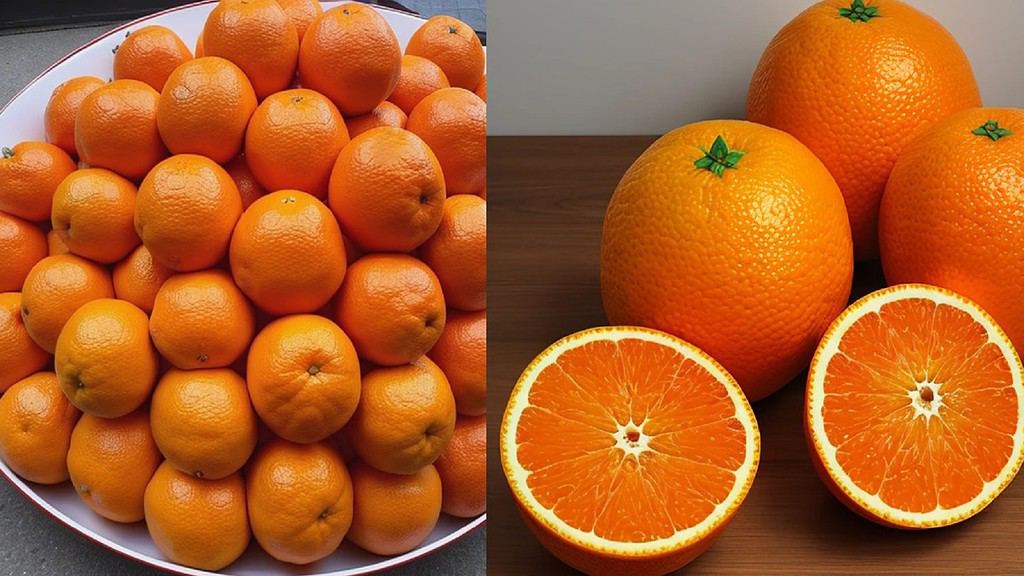
Oranges are one of the most popular and widely consumed citrus fruits in the world. Known for their bright orange color and refreshing taste, they are a common feature in many households, often eaten fresh or juiced. The flavor of an orange is a delightful mix of sweetness and acidity, which makes it appealing to people of all ages. Oranges are rich in vitamin C, a crucial nutrient that helps strengthen the immune system, making them an excellent choice during cold and flu season.
In addition to their immune-boosting properties, oranges are also packed with antioxidants, such as flavonoids, which help neutralize harmful free radicals in the body. These antioxidants have been linked to a reduced risk of chronic diseases, including heart disease and cancer. The high fiber content in oranges supports digestive health by promoting regular bowel movements and improving overall gut function. This dietary fiber also helps to regulate blood sugar levels and control appetite, making oranges a good option for those looking to manage their weight. Furthermore, oranges are a great source of potassium, which helps regulate blood pressure and supports healthy muscle and nerve function.
Oranges offer not only nutritional advantages but also remarkable versatility in culinary applications. The zest of an orange can add an aromatic touch to baked goods, while the juice can be used in dressings, marinades, or beverages. The combination of sweetness and tanginess makes oranges a perfect addition to salads, desserts, and even savory dishes like roasted chicken or grilled fish. The essential oils extracted from the peel are also used in aromatherapy and natural cleaning products, thanks to their uplifting scent and antibacterial properties. Oranges not only provide numerous health benefits but also bring a burst of flavor to a wide variety of recipes, making them a staple citrus fruit in many kitchens.
2. Lemons

Lemons are another well-loved citrus fruit, known for their bright yellow skin and tart, tangy flavor. They are versatile fruits used in cooking, baking, beverages, and even household cleaning. The juice of a lemon is an excellent source of vitamin C, which plays a vital role in immune function, skin health, and the prevention of oxidative stress. Lemons are also rich in flavonoids, which have antioxidant and anti-inflammatory properties that help combat free radicals in the body. These antioxidants have the potential to reduce the risk of chronic diseases, such as heart disease and diabetes.
The acidity of lemon juice is known to stimulate the production of digestive enzymes, making it a popular remedy for indigestion and bloating. Starting the day with a glass of warm lemon water is a common practice that helps promote hydration and digestive health. The high citric acid content in lemons also supports liver function and detoxification by aiding in the elimination of toxins from the body. Lemons have been used for centuries as a natural remedy for various ailments, from sore throats to colds, due to their antimicrobial properties. Aside from their health benefits, lemons are indispensable in the kitchen. They add a refreshing acidity to savory dishes, such as fish, seafood, salads, and vegetable dishes.
Lemon zest is often used to infuse flavor into baked goods, sauces, and dressings. The bright, tangy taste of lemons also makes them a key ingredient in beverages like lemonade, cocktails, and iced tea. The peel of the lemon contains essential oils that are used in cleaning products due to their fresh scent and natural disinfectant properties. Whether used in the kitchen or as a natural remedy, lemons are a citrus fruit that brings both flavor and health benefits to daily life.
3. Grapefruits

Grapefruits, known for their slightly bitter and tangy flavor, offer a unique taste experience among citrus fruits. They come in different varieties, including pink, red, and white, with the red and pink varieties offering a sweeter taste, while the white variety is more tart. Grapefruits are a rich source of vitamin C, which helps boost the immune system and protect the body from infections. Like other citrus fruits, grapefruits contain antioxidants, such as lycopene, which are known to help fight free radicals in the body and reduce inflammation. The antioxidants in grapefruits have been linked to a lower risk of chronic conditions, including heart disease and certain types of cancer.
The fiber content in grapefruits supports digestive health by promoting regular bowel movements and improving overall gut health. Eating grapefruit can also contribute to weight management, as the fiber helps control hunger and keeps the stomach feeling full longer. Moreover, grapefruits are low in calories and have a low glycemic index, meaning they do not cause sharp spikes in blood sugar levels, making them a great option for people with diabetes or those looking to maintain balanced blood sugar levels. The potassium in grapefruits supports heart health by regulating blood pressure and preventing fluid imbalances.
Although grapefruits have many health benefits, it is important to note that they can interact with certain medications, such as statins and may alter their effectiveness. This is due to compounds in grapefruit that affect the enzymes responsible for metabolizing drugs in the liver. Therefore, it is advisable for people on medications to consult their doctor before consuming grapefruit regularly.
In terms of culinary uses, grapefruits are often eaten fresh or juiced, and their tangy flavor adds a refreshing kick to fruit salads, smoothies, and desserts. Grapefruit segments can also be added to savory dishes, like salads or salsas, where their acidity and bitterness balance out richer flavors. The zest of grapefruit can be used to add a citrusy aroma to baked goods, cocktails, and sauces, while grapefruit juice is commonly used in beverages like cocktails, mocktails, and fresh juices. With their distinctive flavor and numerous health benefits, grapefruits are a refreshing and nutritious citrus fruit.
4. Limes

Limes are a small but powerful citrus fruit known for their intense tartness and aromatic qualities. Their vibrant green skin and sharp flavor make them a favorite in both culinary and beverage applications. Limes are an excellent source of vitamin C, which helps strengthen the immune system and promotes healthy skin. They also contain antioxidants that protect the body from oxidative stress and may reduce the risk of chronic diseases, such as cardiovascular disease and cancer. The acidity of lime juice stimulates the production of digestive enzymes, which aids in the digestion of food and helps alleviate indigestion.
Lime juice is also commonly used as a remedy for sore throats and colds, as it has natural antimicrobial properties that can help fight infections. Limes are known for their ability to balance flavors in cooking, as their tartness cuts through rich, fatty, or spicy dishes, providing a refreshing contrast. Lime juice is a key ingredient in many cuisines, particularly Mexican, Thai, and Indian dishes, where it enhances the flavors of meats, seafood, and vegetables. Lime zest, the outer peel, is also a popular addition to baked goods, sauces, and marinades, adding a fragrant citrusy note.
Limes are also widely used in beverages, including limeade, cocktails like margaritas and mojitos, and in refreshing water infusions. The essential oils in lime peels have natural antibacterial and antiseptic properties, making them useful in cleaning products and air fresheners. In addition to their culinary and cleaning applications, limes are also used in beauty and skincare products, where they are valued for their refreshing scent and skin-brightening qualities. Limes not only contribute a burst of flavor to food and drinks but also offer a range of health benefits, making them an essential citrus fruit for everyday use.
5. Pomelos
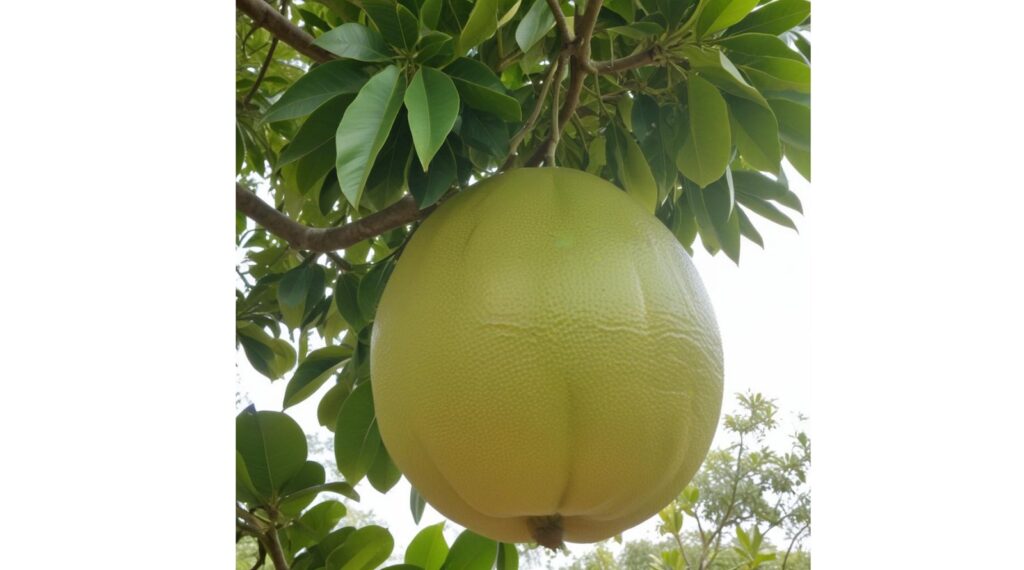
Pomelos are large, tangy citrus fruits with a distinct, mild flavor that sits somewhere between a grapefruit and an orange. The fruit is often considered the largest of the citrus family, with a thick, spongy rind that encases sweet, juicy flesh. Though pomelos are sometimes mistaken for grapefruits due to their similar size and appearance, they are actually a separate species of citrus fruit. The flesh of a pomelo is typically pale yellow or pink, depending on the variety, and the taste is far less bitter than that of a grapefruit. Its sweetness is complemented by a subtle acidity that makes it both refreshing and enjoyable to eat.
Pomelos are rich in vitamin C, which is essential for boosting the immune system, and they contain a variety of antioxidants that help combat oxidative stress in the body. These antioxidants play a role in reducing the risk of chronic diseases, including heart disease and cancer. The fruit also has a high fiber content, which aids digestion and supports healthy bowel movements. Fiber helps to regulate blood sugar levels, making pomelos a suitable fruit for those managing diabetes.
The fruit is low in calories, making it an excellent choice for weight management, as it helps to satisfy hunger without contributing to excess calorie intake. Beyond their nutritional benefits, pomelos are also a culinary delight. The flesh is often eaten fresh, either on its own or added to fruit salads, where it pairs well with other tropical fruits like mango and pineapple.
Pomelos are also used in savory dishes, such as salads with shrimp or chicken, where their sweet and tart flavor balances out more savory ingredients. The juice of the pomelo can be used in cocktails, smoothies, or dressings, adding a fresh citrusy note. The rind of the pomelo, although often discarded, is edible and can be used to make marmalades or zest to flavor desserts and savory dishes alike. Pomelos are a refreshing and versatile citrus fruit, perfect for those looking to enhance their diet with something both nutritious and delicious.
6. Kumquats
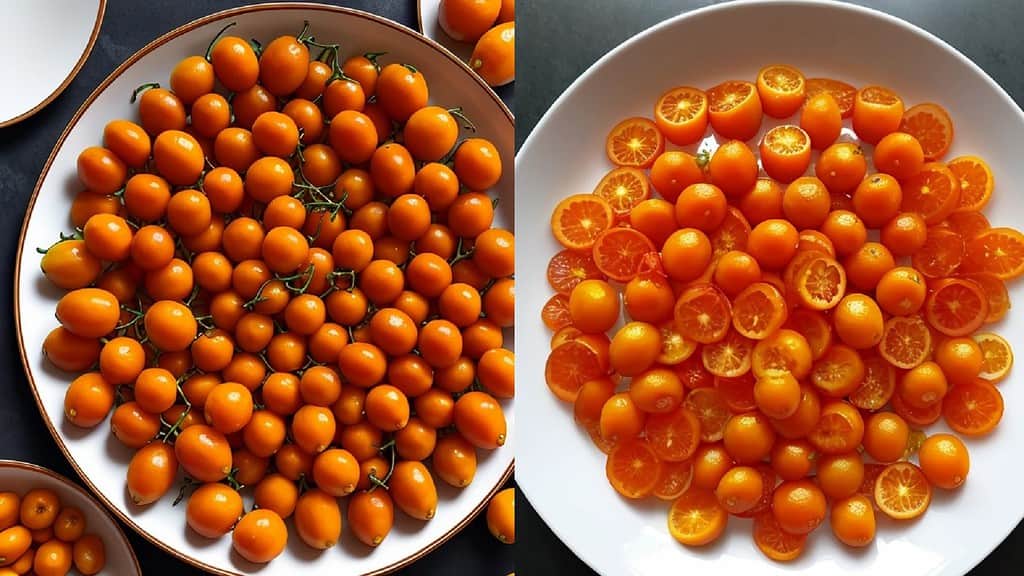
Kumquats are small, oval-shaped citrus fruits that are unique in that they can be eaten whole, rind, and all. The skin is sweet and tangy, while the flesh inside offers a sharp, sour contrast. This combination of sweetness and sourness makes kumquats a distinct citrus fruit that stands out from others in the citrus family.
Although small, kumquats pack a punch in terms of nutritional value. They are an excellent source of vitamin C, which supports immune health and acts as a powerful antioxidant. Kumquats are also rich in fiber, which aids digestion and helps maintain healthy blood sugar levels. This makes kumquats a great option for people looking to boost their overall health or manage conditions such as diabetes.
Additionally, kumquats are low in calories and contain no fat, making them an ideal snack for those watching their weight. These fruits are also high in flavonoids, which are plant compounds with antioxidant and anti-inflammatory properties. The high content of antioxidants helps protect the body against free radicals, which can damage cells and contribute to chronic diseases. Kumquats are commonly eaten raw, often as a snack or added to salads for an extra burst of flavor. They can also be sliced thin and used to garnish dishes, from desserts to cocktails, adding a pop of color and flavor.
Kumquats can be preserved in sugar syrup or turned into marmalade, where their sweet-tart flavor really shines. The zest of kumquats can also be used to add a citrusy punch to baked goods, such as cakes, muffins, and cookies. In savory dishes, kumquats can be paired with meats like duck or pork, where their tangy flavor adds a refreshing contrast to rich or fatty meats. Their unique flavor profile and versatile usage make kumquats an excellent addition to many recipes, offering both health benefits and culinary excitement.
7. Blood Oranges

Blood oranges are a variety of oranges that stand out due to their deep red, maroon-colored flesh, which contrasts sharply with their bright orange rind. This distinct color comes from the presence of anthocyanins, which are antioxidants also found in other red fruits like berries. The flavor of blood oranges is a complex blend of sweetness and tanginess, with a slight hint of raspberry or strawberry, which sets them apart from regular oranges. The unique taste and vibrant color make blood oranges a popular choice for juicing, salads, and desserts.
Blood oranges are rich in vitamin C, which supports the immune system and helps the body fight off infections. They also provide antioxidants that help combat oxidative stress and reduce inflammation in the body, potentially lowering the risk of chronic diseases like heart disease and diabetes.
Like other citrus fruits, blood oranges are high in fiber, which aids digestion and helps regulate blood sugar levels. The fiber in blood oranges also helps to keep you feeling fuller for longer, making them a great snack for weight management. In addition to their nutritional benefits, blood oranges are a versatile ingredient in the kitchen. The sweet and tangy flavor makes them a perfect addition to fruit salads, where they can be paired with other citrus fruits or tropical ingredients like kiwi or pineapple.
Blood orange juice can be used in cocktails, salad dressings, or as a refreshing beverage on its own. The zest of the blood orange can be used in baking or to infuse oils, giving dishes a fragrant citrusy flavor. Blood oranges are also commonly used in desserts, such as tarts, sorbets, and cakes, where their bold color and unique flavor add both visual appeal and taste. Despite their seasonal nature, blood oranges offer a burst of flavor and health benefits, making them a citrus fruit worth incorporating into your diet when they are available.
8. Bergamots
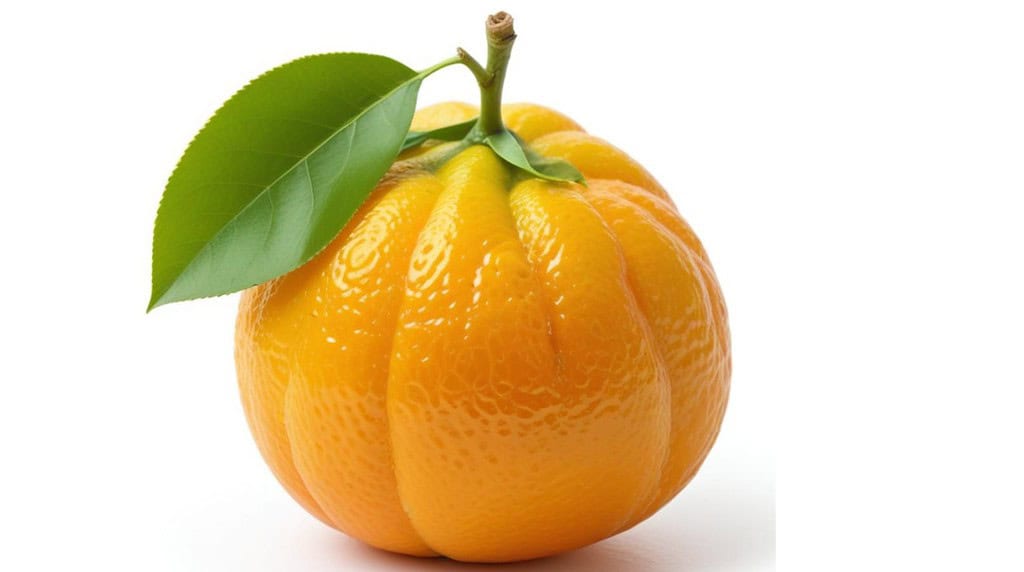
Bergamots are small, round citrus fruits with green or yellowish skin and a highly aromatic scent. They are best known for their use in flavoring Earl Grey tea, where their unique, floral aroma adds a distinctive note to the beverage. The flavor of bergamot is not as sweet as other citrus fruits, and it has a slightly bitter, spicy taste that sets it apart from more common citrus varieties like oranges or lemons. Bergamot essential oil, derived from the peel, is esteemed in aromatherapy for its soothing and uplifting effects on mood. The oil is often used to relieve stress, anxiety, and depression, and it is commonly found in perfumes, lotions, and candles.
Bergamots are not typically eaten raw due to their bitter taste, but they are used in cooking and baking to add depth of flavor. The zest of the bergamot can be used to infuse oils, syrups, or even desserts, while the juice is sometimes incorporated into savory dishes, such as marinades for meats or seafood. Despite their slightly bitter taste, bergamots are a citrus fruit that offers a range of health benefits. They are a rich source of antioxidants, which can help reduce inflammation and prevent oxidative damage in the body. The antioxidants found in bergamots have been linked to improved heart health by helping to regulate cholesterol levels and reducing the risk of cardiovascular disease.
Bergamot extract is also known to support digestive health and can help relieve symptoms of indigestion and bloating. While bergamots are not as commonly found in grocery stores as other citrus fruits, their essential oil and unique flavor make them a prized ingredient in both culinary and wellness circles. They are also used in traditional medicine for their ability to improve mood, reduce stress, and promote relaxation. Whether used in tea, skincare, or cooking, bergamots are a citrus fruit that offers a variety of applications and benefits.
Citrus Fruits: Some Side Effects

While citrus fruits are widely recognized for their tangy flavor and numerous health benefits, they can also cause some side effects, particularly if consumed in excess. These fruits, known for their rich vitamin C content, antioxidants, and digestive benefits, can sometimes lead to digestive issues. One common side effect is acid reflux or heartburn, which occurs when the high acidity in citrus fruits irritates the esophagus. This can lead to discomfort, including a burning sensation in the chest, especially for those who are prone to acid reflux or gastroesophageal reflux disease (GERD). Overconsumption of citrus fruits may exacerbate this condition, as their acidity can relax the lower esophageal sphincter, allowing stomach acid to move back up into the esophagus.
Additionally, some individuals may experience an allergic reaction to citrus fruits. While rare, symptoms can include itching, swelling, or hives, and in more severe cases, difficulty breathing. These allergic reactions may be more common in individuals who are allergic to other fruits, such as mangoes or bananas, as they share similar proteins that can trigger an immune response.
Moreover, citrus fruits, particularly lemons and oranges, contain compounds known as furanocoumarins, which can increase the skin’s sensitivity to sunlight. This can lead to a higher risk of sunburn or skin irritation if exposed to the sun after consuming citrus fruits or their juices. The photosensitivity effect is usually mild but can cause discomfort or long-term skin damage for those who are sensitive to sunlight.
For people with sensitive teeth, the high acidity in citrus fruits can also erode tooth enamel over time, leading to tooth decay and increased sensitivity. This is especially true when citrus fruits are consumed frequently or in large quantities. It is advisable to rinse the mouth with water after eating citrus fruits to neutralize the acids and protect the enamel.
Additionally, excessive consumption of citrus fruits can sometimes lead to kidney stone formation, as the high oxalate content in certain varieties of citrus can contribute to the development of stones in individuals who are prone to them. While citrus fruits are generally a healthy and delicious addition to the diet, it is important to enjoy them in moderation to avoid these potential side effects.
Disclaimers: *This article is only for informational purposes.
**Do not make your important decisions based solely on the information provided in this article. Do your own research.
***Information in this article may vary or get updated in the future.
****Contact a doctor or a medical professional for a medical emergency.
Read More Science and Space Articles
- 8 Non-CO₂ Greenhouse Gasses That Are Worst Than CO₂
- Chemistry: 8 Unique Ways to Become Efficient At It
- 8 Ways Water Crisis is Worsened by Global Climate Change
- 8 Amazing Ways Brain Anatomy is Altered by New Learning
- 8 Disastrous Ways Deforestation Destroys Biodiversity
- Mathematics: 8 Interesting Ways To Become Efficient At It
- 8 Worst Ways Global Climate Change Hurts The Impoverished
- Danger Of Environmental Damage: 8 Ways A Person Can Help
- Eradication Of Poverty: 8 Critical Ways Science Helps
- STEM Fields: 8 Important Reasons Why You Must Learn Them
- Making Your Kid Efficient At STEM Subjects: 8 Important Steps
- Making Your Kid Science Enthusiast: 8 Important Steps
- Becoming A NASA Aspirant: 8 Important Steps You Must Follow
- Top 8 Important Wellness Habits That You Must Follow
- Top 5 Amazing Whole Grains That Are Healthier Than Rice
- Indian Space Program: 8 Incredible Achievements
- China’s Space Program: 5 Amazing Accomplishments
- Discoveries by JWST: 10 Incredible Findings of The Telescope
- NASA’s MOXIE Creates O2: Big Step Towards Mars Colonization
- Top 5 Amazing Properties of Time That Defy Common Sense
- 10 Factors for Emergence of Intelligent Life in The Universe
- Space Science: 6 Vital Reasons Why We Should Invest in It
- Solar System: 10 Astonishing Uniqueness of our star system
- Top 6 Solar System Objects That Might Destroy Life On Earth
- Certain End of The Universe: 4 Forces of Nature to Watch Out For




